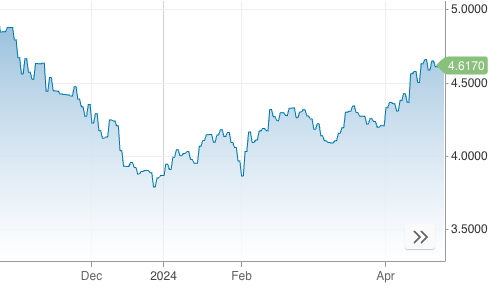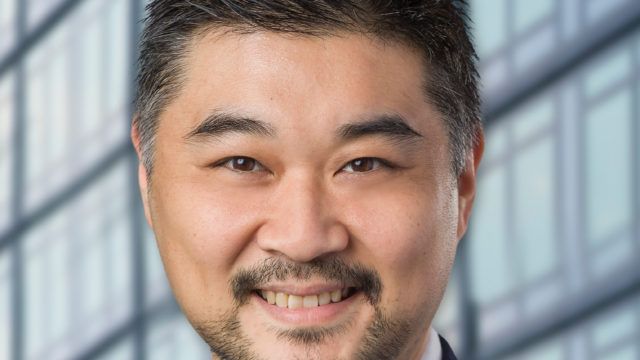Yields are close to peaking and the bullish case for long duration bonds remains intact, according to J.P. Morgan Asset Management’s (JPMAM) Apac chief market strategist Tai Hui.
At the end of last year, markets were aggressively pricing in rate cuts for 2024 and it seemed like window of opportunity to lock in higher long-duration yields was closing.
However, a string of stronger-than-anticipated inflation figures have since pushed back rate cut expectations and sent US 10-year yields up from 4% to 4.6% over the quarter.
“Fixed income has been a pain trade,” Hui told a media briefing in Hong Kong on Wednesday. “We’ve been calling for US treasuries and investment grade corporate bonds for much of this year, but I think we are close to the peak of those bond yields.”
“In the short term there may be some volatility, but we’re still expecting rates to be lower, which will drive bond yields lower eventually.”
Hui highlighted the fact that the short duration two-year Treasury trades at 5% whereas the longer duration 10-year trades at 4.6%, suggesting that the market still expects yields to follow a downward trajectory.
“The Fed’s rate cut is arguably delayed, but it is not cancelled,” he said. “We are still expecting a rate cut cycle to come.”
US 10-year yields

Hui acknowledged that the US economy is still struggling with the final leg of inflation decline which has been difficult to bring down due to stubbornly high housing and insurance costs.
Inflation indicators
However, he added: “If you look at some of the high frequency indicators, rent increases already started to come down in the middle of last year, but there’s a major lag between reality and what’s reported in the CPI numbers.”
When it comes to the high insurance costs, premiums have been rising because of increasing costs, rates of crime and frequency of natural disasters.
“But obviously car insurance can’t be rising at 20% year-on-year indefinitely,” Hui said. “So some of these larger inflation components should gradually come down.”
When it comes to the Fed’s decision making, Hui (pictured) said that they are constrained by the official data figures.
“The decision-making process is based on what they can see from the data, and the data right now is still quite choppy,” he said.
“It’s like me driving in the car at night with no streetlights; I can see maybe 100 metres ahead and I can steer my car in that direction but beyond that, I’m not quite sure what the world looks like.”
Hui expects the Fed will likely cut rates going into a soft landing, rather than a financial crisis or severe recession. In that scenario, both fixed income and equities typically tend to perform well, he noted.
His target for the US-10-year bond yield is 4%, and potentially 3.5% over the longer-run. This means with an eight-year duration, even a small move from 4.6% to 4% can add roughly 5% to the upside from a total return perspective.
However, Hui emphasised the appeal of long-duration bonds also comes from the hedging opportunity it can provide in the event of a potential recession.
“If the economy really has a hard time, you’re not going to settle at 3%, it could go all the way back to 2% – so that provides some cover for equities.”
He added: “I still think that this is a very good time to lock in high yields. I said earlier in the year that was your last chance, but here is a second chance.”
When it comes to equities, the strategist favours US, Japanese, Taiwanese, and South Korean markets.
“Taiwan and South Korea were a huge drag on earnings growth last year and in 2022 because of inventory destocking,” he said.
“But in the next two to three years, you should expect to see more consumer electronics with AI capability embedded that could prompt a new cycle of product replacement.”
“That’s why despite pretty strong performance year-to-date in Taiwan, we’re not quite willing to switch away.”

















